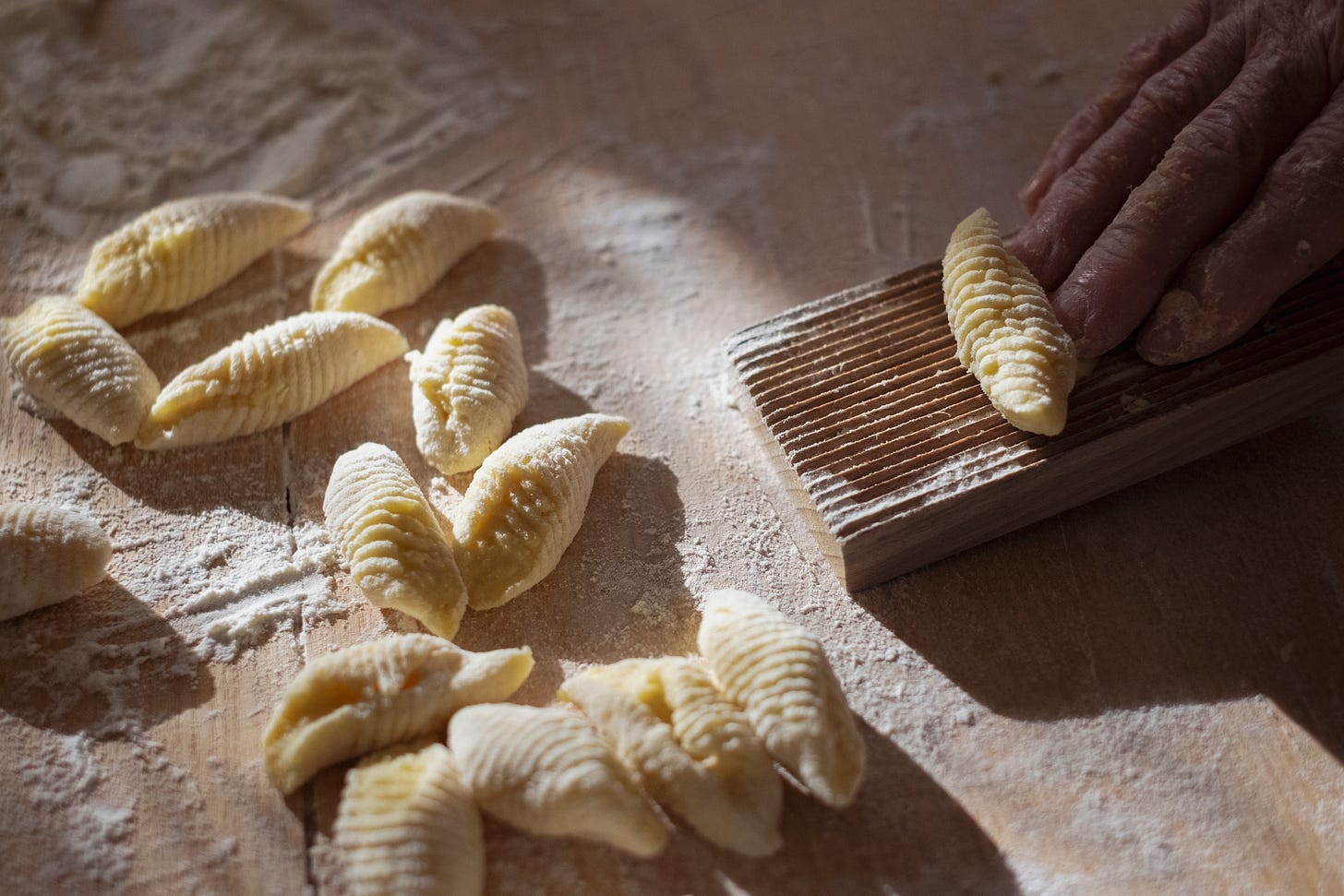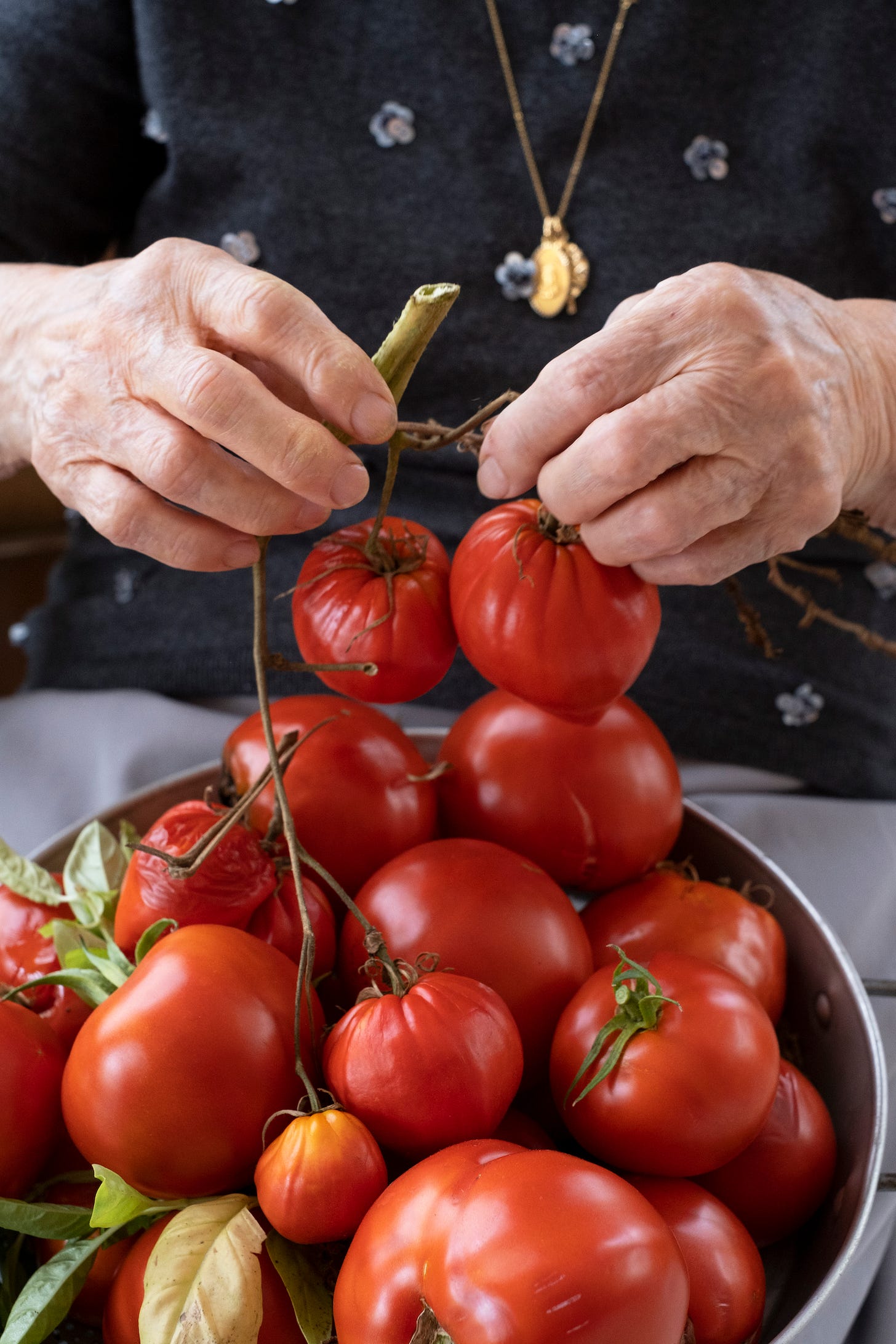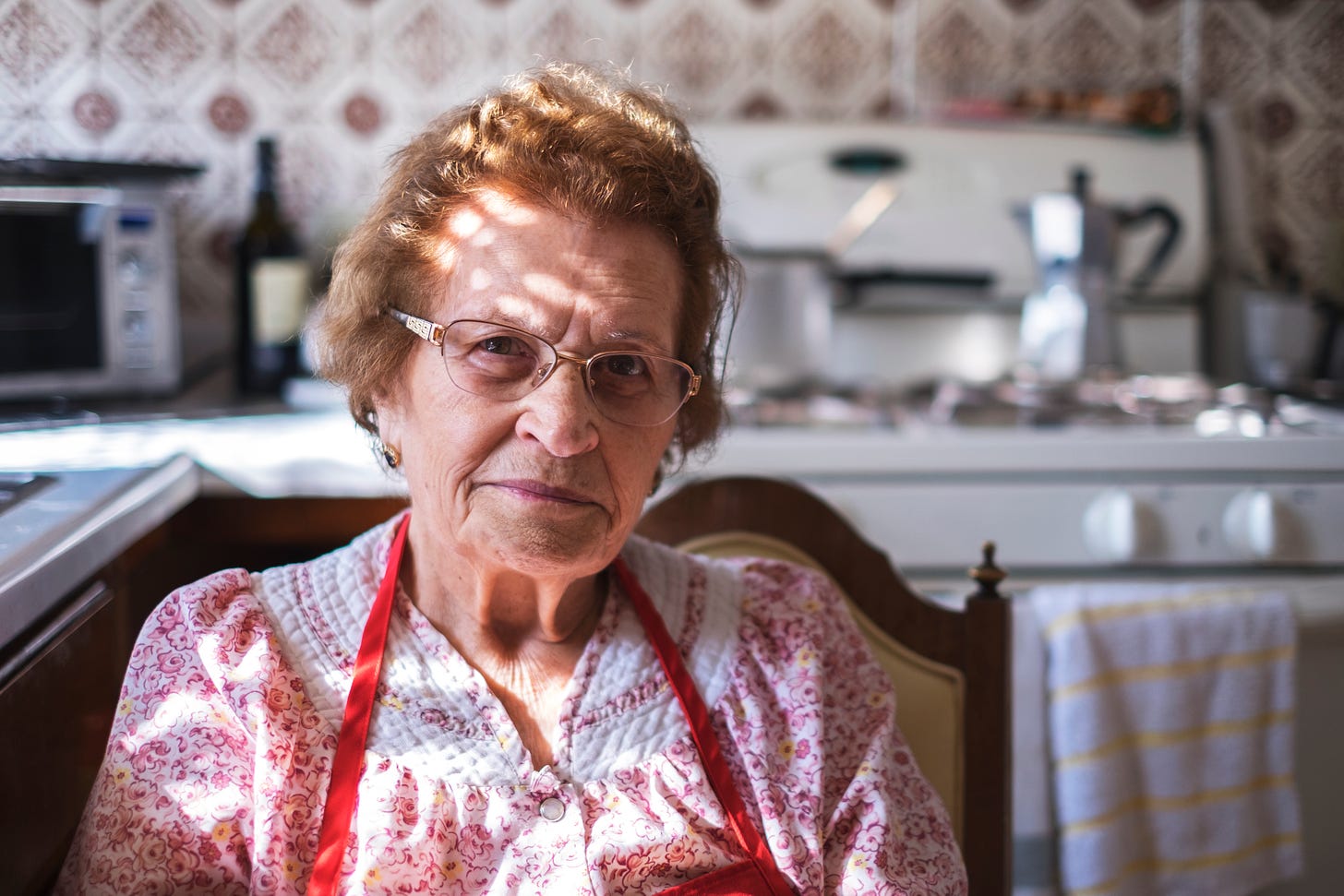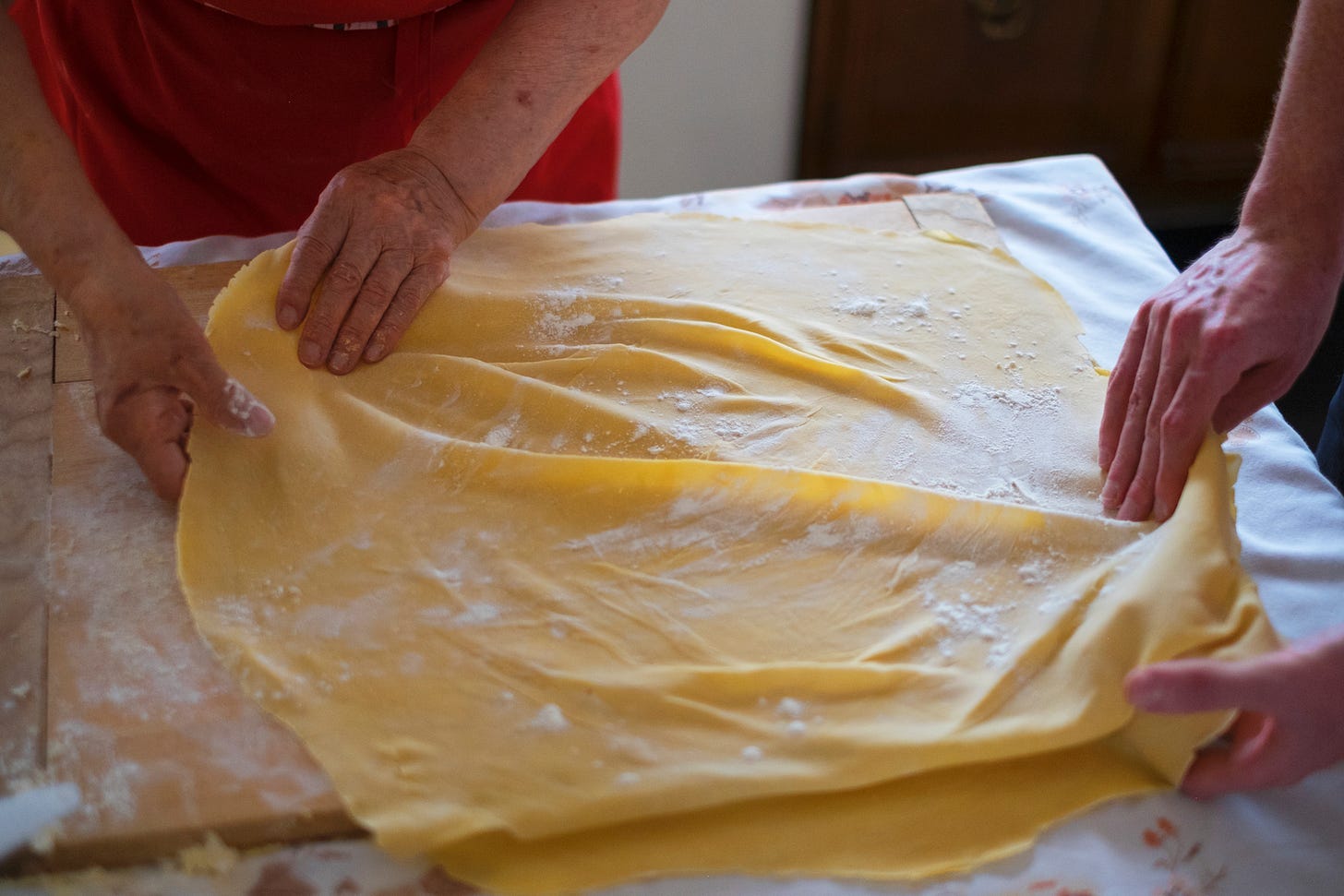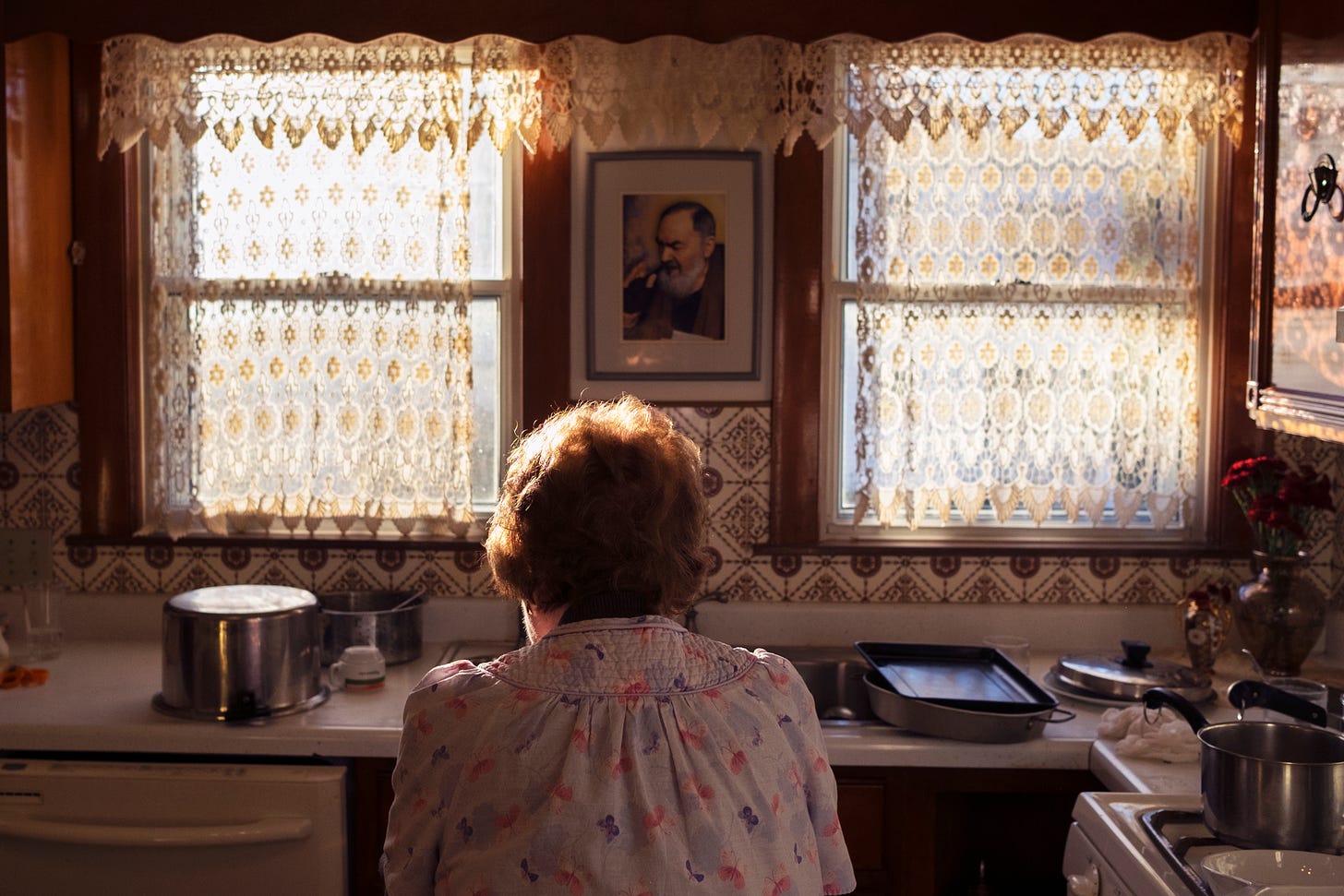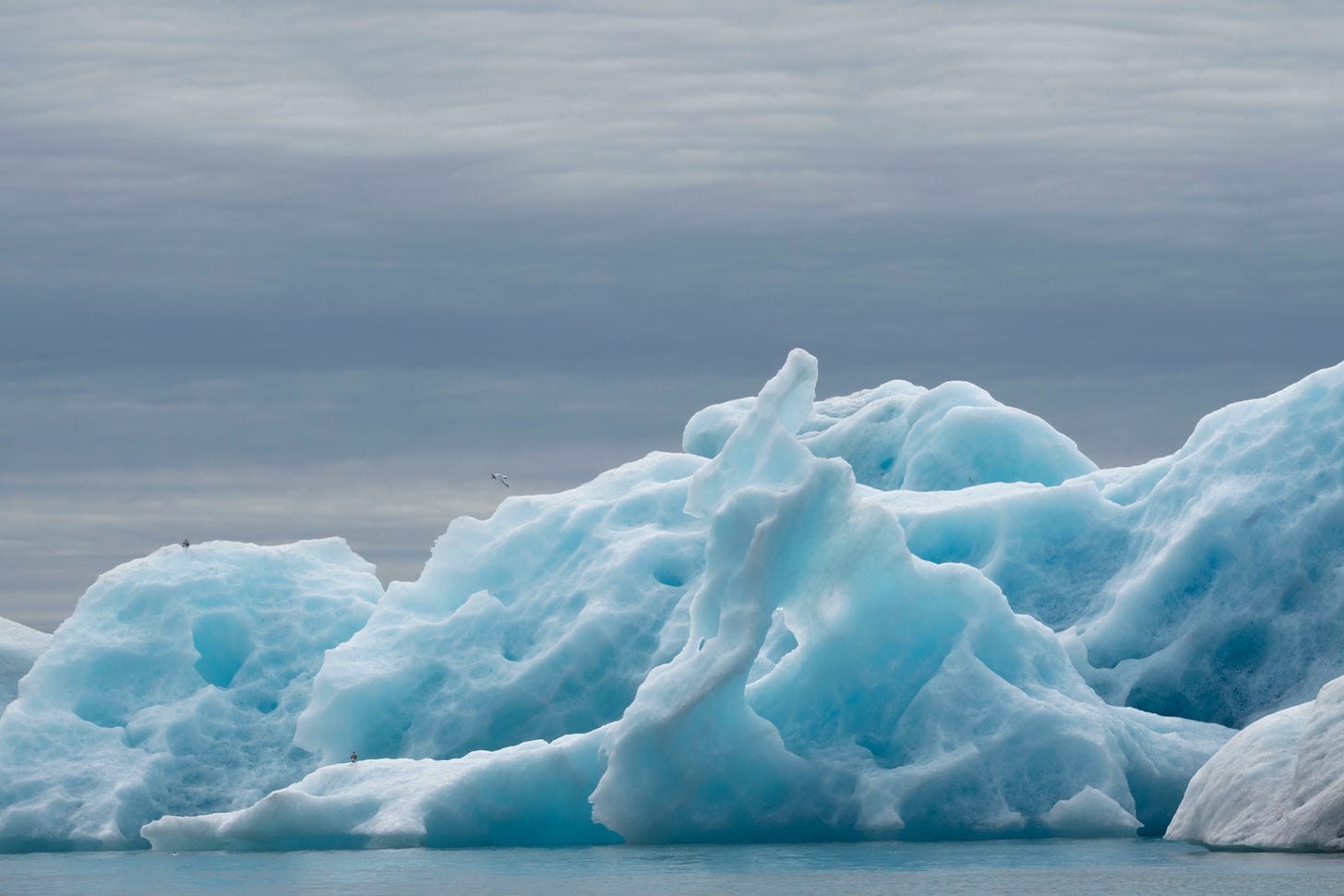Heart-Shaped Tomatoes by Dimitri Staszewski & Madelyn Wigle
Exploring independence, generational knowledge, love, & family
Hello,
Welcome back to another edition of A Longer Look. I spoke with Dimitri Staszewski, an Austin-based documentary photographer. I met Dimitri at this past summer’s Putney Student Travel Orientation in Vermont (we were both leading trips for the company). We spoke about his first cookbook “Heart-Shaped Tomatoes” and the importance of larger projects. “Heart-Shaped Tomatoes” is a photo-driven cookbook about Elda Cristini, Dimitri’s grandmother. The book, which was co-authored by Madelyn Wigle, “uses recipes, photography, and personal essays as an entry point to examine themes of independence, generational knowledge, love, and family.”
Alright, it’s time to dive into the conversation with Dimitri.
Alright, Dimitri, let’s get started. Can you tell me more about your entrance into the genre of food photography?
I would say my brief introduction to food photography was in Philadelphia. I was living there for a couple of years before I moved to Austin. I was just working in a restaurant to pay my bills, and the restaurant needed some photos. I was like, “hey, I can take photos,” and had never really done it before. I don't think I really realized how challenging it was until the food was in front of your camera.
I did a couple of shoots for the restaurant, but nothing major. My first big experience with food photography was the cookbook, which was this trial by fire. The main shoot was basically a two-week shoot when I stayed with my grandma. We kind of just needed to get all the dishes during that time. That was the main foray into food photography.
Well, that's quite the entrance. Can you talk about the evolution of the idea that led to the project?
I have a very close relationship with my grandmother. I grew up in San Francisco, but she's always lived on the East Coast outside of Boston. When I was about 17, I started making an effort to go visit her on my own. At that point, my relationship with her really changed because when you're younger, and you're spending time with a grandparent, your relationship is always kind of dictated by your parents. So I started to have this more independent connection with her. And, over more than a decade, I was just continuing to spend time with her on my own.
And just in the back of my mind, as I was growing as a photographer, I always felt I want to do something about my grandmother. The experience of visiting her was always so powerful. Just the experience of driving there and thinking about what I would want to get out of that experience. With her age, she's currently 102, you do start to think this could be the last time I see this person. So I was just trying to think about how I could capture that feeling.
We had planned this family trip and it's kind of rare that my whole family would all see her at the same time, especially in her home. My brother asked her to teach him how to make pasta from scratch. I had brought my camera and she ended up teaching him and I photographed that experience.
I don't know how it is for you, but for me, it's very rare that I download my photos, throw them into Photo Mechanic, and feel really good. And with these images, it was just like “these are awesome.” And it was actually a pretty quick moment of “I should make a cookbook. This is the project that I've been looking for.” And it came from this spontaneous shoot where I was not going into it thinking “this is going to be the beginning of the project.” But some of those images actually made it into the book and some are pretty important.
How long did it take from that first session to when you were mailing cookbooks?
So that timeline was over three years. It was a very extended process because it was basically that first session that happened, then maybe six months later, we went and did that two-week shoot. For the two weeks, it was me, my co-author, Madelyn, and my mom, (my grandma speaks decent English, but it was helpful to have my mom there to kind of translate and make sure that everything was being communicated). We were shooting three different recipes a day with my grandma, who was 98 at the time, and it was an intense two-week shoot.
And then there were probably six months when nothing happened, which I think was very important to the project. I was able to get some feedback, most of which I completely disregarded, to be honest. But more so, I just had space away from the images and was able to go back and look at them later. I don't know what it was, but there was something missing. So in 2019, I ended up going back a couple of times on my own and capturing some really important images that I think were really needed (including the cover image)
Then Covid happened, which, you know, the beginning of that was really intense. I was actually working at a different restaurant at the time and I was laid off from that job. So, all of a sudden, I had all this free time to work on whatever I wanted. That's when we started diving into the design with our designer Mitch, who's a super talented graphic designer. Figuring out what the book was going to look like and they did such an incredible job of researching old Italian fonts and a ton of historical documents to figure out how that was gonna work. And then tie my grandma’s life in—She used to run a restaurant in the North End of Boston. So we wanted to use graphic design elements from her menus, for example.And we were also editing the recipes, which I did with my mom, which took a really long time and much longer than I expected. So after the design, we moved into production, which was another very extended amount of time, and just with the COVID shipping delays, it really took much longer than I expected.
It’s interesting how time can be important and impactful in how we see our work.
I feel, in some ways, I wish it had been finished quicker. But at the same time, I feel like each moment where the timeline was extended, that left an opportunity for a specific idea to kind of come to me, you know I feel like it was very serendipitous in that the extended timeline allowed for this additional inspiration. Which was amazing.
That’s great. Could we back up and talk more about the collaborative process?
Madelyn and I collaborated pretty closely from the beginning. The book would never have happened without her. So yeah, that was a very close collaboration through the production and the initial design. And, half the essays in the book are written by her, and half of them are mine. It was very much a close collaboration there.
Then it shifted to the recipes, which was a collaboration between me and my mom, which was right during the beginning of COVID, that we were doing most of that. So it was a lot of long phone calls, where we'd be reading through the recipes, because neither of us are recipe developers. That was just a lot of loud phone calls with my mom for hours at a time. So each phase, it was kind of something different.
It was more of a collaboration with Mitch, the designer. Most of the stuff they did, I would just get it back and I didn't have too many notes. Just being super particular about text choices and making sure it was consistent throughout.
Then the final phase was the collaboration with my book broker who was coordinating directly with the printer in South Korea, but he was more of an expert in the materials and figuring out what the best binding and that kind of stuff, which was not too complicated. It was more just the timing. That was complicated.
Makes sense. This project is a really big endeavor. I'm curious if this project has shifted how you're making images now or if it has adjusted your lens as a photographer?
I don’t think I adjusted my lens as a photographer. I wouldn’t say I’ve changed the way I’m making images, but it definitely has changed the way that I'm thinking about making and finishing projects.
When I was younger, I had more of this maybe unhealthy sense of urgency that I just need to finish things, I need to put stuff out in the world. As I was feeling that way, I looked up to these photographers who are working on these long-term projects, long-term personal projects, you know, which I think gave me permission to be more patient and to let the projects kind of speak for themselves and take the amount of time that they're gonna take.
Currently, I'm working on another project, which I started at the beginning of 2021. I probably could have already finished the book and put it out, but I just feel way less of a sense of urgency. Whereas before my hope was let's just get it done … I don't know, that kind of false sense of urgency isn't really productive.
I feel like that is something I'm unlearning right now, too. It can take time to make something substantial happen and urgency can derail creativity. However, small teams can really elevate work when different strengths are utilized together.
Definitely, working directly with my mom was a lot of figuring it out for the recipe development. And, we just had to be patient with one another. Ultimately, it was that aspect, working so closely with my grandma and with my mom, that was incredible. The whole project is about family. The book, it's about my grandmother, but it's also more broadly about these themes of how we attach memories to food and family and the fact that the themes of the book were also coming through in the process of making it was a bonding experience that I had with both my mom and my grandmother that was really special and continues to be special as I go back and reread the essays or look back on the images.
It feels congruent.
Are there any lasting takeaways from this project that might be beyond photography and this specific project?
One of the biggest takeaways was seeing a project from just the spark of an idea all the way to completion. And just with creating a book, it completely shifted my personal practice to seeing bookmaking as a really important part of my practice, which is really exciting.
If you are interested in getting your hands on a copy of “Heart-Shaped Tomatoes” you can purchase the cookbook here.
Notes:
Learn more about Natalie Behring’s first zine “The Wild Night.”
I recently had a photo essay and a short write-up in The Washington Post. The essay examined the raw natural power on display in Iceland.



